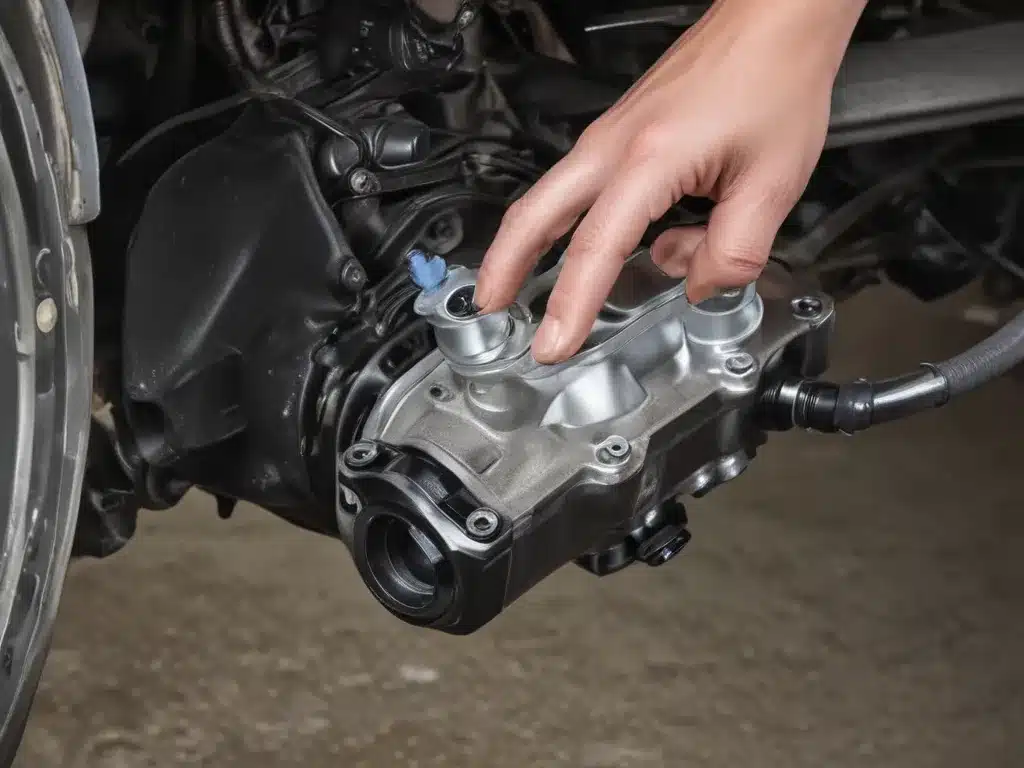
Brakes, Brakes, Brakes: A Crash Course on Brake Master Cylinder Replacement
Strap yourselves in, folks, because today we’re diving deep into the world of brake master cylinder replacement. Now, I know what you’re thinking – “Brake master cylinder? Isn’t that just some fancy car part that only mechanics know about?” Well, my friends, you’d be wrong. Replacing a brake master cylinder is something any car-savvy individual can tackle, and I’m here to show you how.
First things first, let’s talk about what a brake master cylinder even is. In simple terms, it’s the heart of your braking system, responsible for converting the pressure you apply to the brake pedal into hydraulic pressure that gets sent to the individual brake calipers. Think of it as the brain behind your brakes – without a properly functioning master cylinder, your car’s stopping power is gonna be about as effective as a paper airplane in a tornado.
Now, you might be wondering, “If the master cylinder is so important, why would I want to replace it without bleeding the brakes?” Well, let me tell you, my fellow gearheads, there’s a method to the madness. Bleeding the brakes can be a real pain in the you-know-what, and if you do it wrong, you could end up with a whole host of other issues. Plus, with the right technique, you can actually replace the master cylinder without having to bleed the entire system. Intrigued? You bet your sweet ride you are.
The Brake Master Cylinder: A Crucial Component Unveiled
Alright, let’s dive a little deeper into the inner workings of this crucial component. The brake master cylinder is essentially a hydraulic pump that sits at the heart of your vehicle’s braking system. It’s responsible for converting the mechanical force you apply to the brake pedal into hydraulic pressure that gets distributed to the individual brake calipers.
Here’s how it works: when you press the brake pedal, it pushes on a piston inside the master cylinder, which in turn forces brake fluid through the hydraulic lines and into the brake calipers. This hydraulic pressure causes the brake pads to clamp down on the brake rotors, slowing your car to a stop.
Now, the reason you might want to replace the master cylinder is if it starts to fail. Over time, the internal seals and components can wear out, leading to a loss of hydraulic pressure and a spongy, unresponsive brake pedal. In some cases, you might even notice fluid leaking from the master cylinder, which is a sure sign that it’s time for a replacement.
The Art of Replacement: A Step-by-Step Guide
Alright, now that we’ve got the basics out of the way, let’s talk about how to actually replace the brake master cylinder without having to bleed the entire braking system. This is a pretty nifty trick that can save you a ton of time and hassle, so pay attention, my car-loving friends.
First and foremost, you’ll need to gather the right tools for the job. You’ll need a few basic hand tools, like a wrench set, pliers, and a brake fluid catch container. You’ll also need a new brake master cylinder that’s compatible with your specific vehicle.
Once you’ve got everything you need, the first step is to disconnect the old master cylinder from the brake lines. You’ll need to carefully remove the brake lines from the master cylinder, taking care not to spill any brake fluid. Next, you’ll need to disconnect the master cylinder from the brake pedal assembly.
Now, here’s the trick: instead of bleeding the entire braking system, you can simply fill the new master cylinder with fresh brake fluid before installing it. This way, when you connect the new master cylinder to the brake lines, the fluid will automatically fill the system, eliminating the need for bleeding.
To do this, simply remove the cap from the new master cylinder and use a brake fluid transfer pump to fill it up with the appropriate type of brake fluid. Once it’s full, you can go ahead and install the new master cylinder, reconnecting it to the brake lines and the pedal assembly.
Putting It All Together: The Final Steps
Alright, now that you’ve got the new master cylinder installed, it’s time to put the finishing touches on your work. First, you’ll need to double-check that all the connections are tight and secure. You don’t want any leaks, after all.
Next, you’ll want to take your car for a test drive. Start off slow, gradually applying the brakes to get a feel for how the new master cylinder is performing. If everything feels good, you can go ahead and take it for a more spirited drive, making sure the brakes are responsive and the pedal feels firm.
If, for some reason, you do notice any issues – like a spongy pedal or a lack of braking power – don’t panic. It’s possible that there’s still some air trapped in the system, and you may need to bleed the brakes. But, hey, at least you’ve already got the hard part out of the way, right?
Conclusion: Mastering the Master Cylinder
Well, there you have it, folks – everything you need to know about replacing a brake master cylinder without the hassle of bleeding the entire braking system. Remember, taking care of your car’s brakes is no laughing matter, but with the right know-how and a little elbow grease, it doesn’t have to be a daunting task.
So, the next time your master cylinder starts acting up, don’t panic. Grab your tools, follow the steps we’ve laid out, and get that bad boy replaced in no time. And who knows, maybe you’ll even impress your friends with your newfound automotive expertise. Just don’t forget to share the love (and the link to AutoOilAndFluid.com) with them, alright?
Happy wrenching, my car-loving comrades! And remember, when it comes to your ride, don’t just maintain it – master it.


